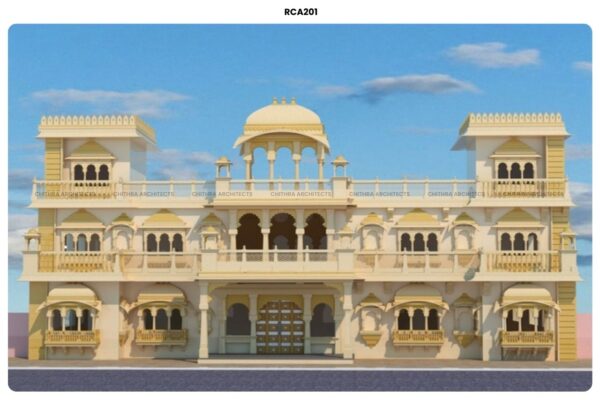Temple Design Services by Chithra Archdesign: Crafting Sacred Spaces with Vastu and Tradition
Temples are not merely buildings; they are sacred spaces that embody spiritual energy, ancient wisdom, and cultural heritage. At Chithra Archdesign, we specialize in Temple Design Services that harmoniously blend Vastu Shastra with traditional Indian Structural styles, crafting temples that inspire devotion, peace, and community connection. Our vastu-aligned temple designs preserve the sanctity and grandeur of timeless temple Structural Design and Planning while incorporating modern structural practices to ensure durability and comfort.
The Essence of Temple Design
Temple Structural Design and Planning is steeped in symbolism and devotion. It involves precise planning and execution to create spaces that facilitate meditation, rituals, and communal worship. The use of sacred geometry, proper orientation, and element balance as per vastu shastra enhances the temple’s spiritual aura.
Our Temple Design Services
- Vastu-Compliant Temple Layout: Our designs adhere strictly to vastu purusha mandala principles, aiming to align the temple with universal cosmic energies and enhance spiritual vibrations.
- Sanctum Sanctorum Design: The heart of the temple, the sanctum sanctorum (garbhagriha), is designed with meticulous vastu precision to house the deity and focus spiritual energy.
- Mandap and Congregation Spaces: Designs include expansive prayer halls and mandaps that facilitate comfortable gatherings, vibrant ceremonies, and community events.
- Ornamental and Structural Details: Incorporating intricate carvings, domes, spires, and traditional motifs, our temple designs reflect authentic craftsmanship and symbolic meaning.
- Surroundings and Landscape Design: We integrate courtyards, water features, and gardens aligned with vastu to create holistic and serene temple environments.
Why Choose Chithra Archdesign for Temple Design?
- Deep Vastu and Traditional Knowledge: Our Archdesign have extensive experience in sacred vastu temple design and authentic Indian Structural practices.
- Customized and Client-Centric: We create temple designs tailored to specific religious traditions, locale, and client vision.
- Sustainable and Durable: Our designs marry heritage aesthetics with modern materials and techniques for longevity and eco-friendliness.
- Comprehensive Services: From initial consultation to design, documentation, and construction supervision, we deliver seamless results.
Our Temple Design Process
- Step 1: Religious and Community Consultation – Understanding the religious requirements and spiritual intent guides the design framework.
- Step 2: Site Study and Vastu Assessment – Detailed evaluation of the site’s physical and energetic attributes shapes vastu-compliant orientation and layout.
- Step 3: Preliminary Design Drafts – Initial temple layouts, elevations, and spatial planning incorporate symbolic geometry and vastu.
- Step 4: Client Review and Design Refinement – Feedback is integrated to finalize Structural and aesthetic elements.
- Step 5: Construction Documentation – Comprehensive drawings and specifications assist in approvals and guide builders.
- Step 6: Construction Monitoring – On-site support ensures the temple is built following vastu guidelines and design integrity.
Benefits of Professional Temple Design
- Enhanced spiritual atmosphere and energy flow
- Preservation of cultural and Structural heritage
- Functional worship and gathering spaces
- Increased community engagement through thoughtful design
Frequently Asked Questions (FAQs)
Q1: How important is vastu in temple design?
A1: Vastu is fundamental to ensuring the temple’s spiritual energy aligns with cosmic forces, enhancing worshipper experience.
Q2: Can temples of different regions or faiths be designed?
A2: Yes, we respect regional styles and diverse spiritual needs while maintaining vastu integrity.
Q3: What is the typical timeline for a temple design project?
A3: Depending on scale, temple design can range from a few months to over a year for larger projects.
Q4: How do you balance tradition and modernity?
A4: By integrating traditional motifs and vastu principles with safe, sustainable materials and construction methods.
Explore more:

